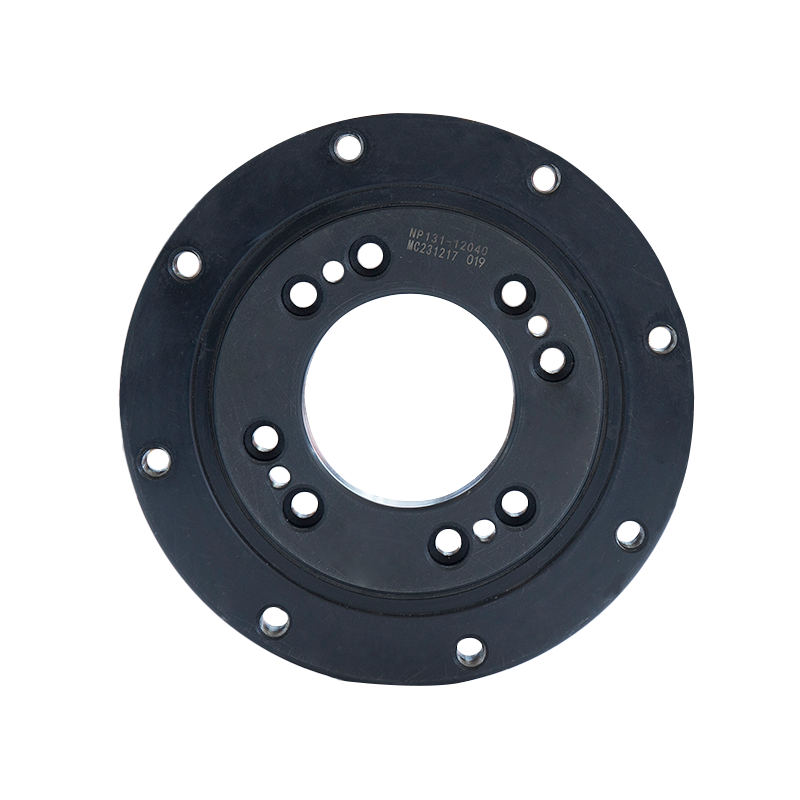How to determine whether a single row cross-roller slewing bearing needs replacement or maintenance?
 2024.09.05
2024.09.05
 Industry news
Industry news
To determine whether a single row cross-roller slewing bearing needs replacement or maintenance, the following aspects should be comprehensively considered:
Noise and Vibration:During normal operation, the bearing should run smoothly with little to no noise. If there is an abnormal "scratching" or "clattering" sound, it may be due to friction between the rollers and raceway, insufficient axial clearance, or uneven mounting surfaces. In such cases, the machine should be stopped for inspection, and appropriate maintenance measures should be taken.Vibration is also an important indicator of the bearing’s condition. If the bearing's vibration increases significantly, there may be internal damage or severe wear and tear, which requires timely inspection and action.Temperature:Bearings generate some heat during operation, but the temperature should remain within the normal range. If the bearing temperature rises abnormally, it may be due to poor lubrication, overloading, or internal damage. In such cases, the machine should be stopped for inspection, and cooling measures should be taken, while checking if the bearing needs replacement or repair.
Appearance Check:Examine the outer surface of the bearing for cracks, flaking, rust, or other defects. These defects can affect the bearing's strength and precision and may even lead to bearing failure. If any such defects are found, the bearing should be replaced promptly.Check whether the bearing’s sealing device is intact. If the sealing device is damaged or fails, external contaminants may enter the bearing, accelerating wear and damage. In this case, replace the sealing device and inspect the bearing to determine if it needs replacement or repair.Internal Structure Check:If conditions allow, the bearing can be disassembled for an internal structure inspection. Focus on inspecting the wear and damage conditions of components such as the raceway surface, rollers, and cage. If there is evidence of flaking on the raceway surface, severe roller wear, or cage fracture, the bearing should be replaced promptly.

Wear Measurement:Regularly measure the wear of the bearing to understand its condition. During measurement, divide the upper and lower bearing rings into eight parts, apply an appropriate tilting moment, and measure the axial and radial clearances at each position.If the wear increases significantly or exceeds the allowable range, the bearing should be replaced promptly.Fit Precision Check:Check whether the fit precision between the bearing and the shaft journal and the bearing housing bore meets the requirements. If the fit is too tight or too loose, it will affect the bearing's performance and lifespan. If the fit precision does not meet the requirements, adjust or replace the bearing promptly.
Operating Conditions:Determine whether the bearing needs replacement or maintenance based on the operating conditions of the equipment (e.g., load size, speed, working environment, etc.). Under harsh operating conditions, the wear and damage of bearings will accelerate, requiring more frequent inspections and replacements.Equipment Requirements:Consider the equipment's performance requirements for the bearing. For high-precision, high-speed, or heavy-load equipment, higher performance requirements are needed for the bearing. If the bearing cannot meet the equipment's requirements, it should be replaced or repaired promptly to ensure normal equipment operation.
Determining whether a single row cross-roller slewing bearing needs replacement or maintenance requires a comprehensive evaluation of the bearing's operating condition, appearance and internal structure, wear and fit precision, and operating conditions and equipment requirements. During the inspection and evaluation process, it is important to strictly follow relevant standards and specifications to ensure the accuracy and reliability of the results.












